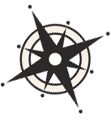Green Bay is recognized as the largest large freshwater estuary in the world. Its waters are nutrient rich and high in biological productivity, making it an important area for many fish species and migratory birds. The resources featured in this topic provide a better understanding of the Green Bay ecosystem and guide decision-making about its management.
Getting Started

This detailed report presents water quality data, as well as the status of fish and wildlife populations, contaminants, aquatic invasive species and beach conditions.

This article provides rich background information about the history of restoration in the Green Bay watershed and emphasizes the challenges of rehabilitating a large ecosystem.

The National Estuarine Research Reserve System (NERR) is a national network of 30 sites across the coastal US, including the Great Lakes, designed to protect and study estuaries and their coastal wetlands. The Green Bay NERR, which is still in the development phases, will offer a coordinating force to manage, restore, and protect the Green Bay ecosystem, with a programmatic focus on four sectors: research, education, stewardship, and training.
Visualizing Conditions

This tool provides real-time data of water conditions from two buoys – one on the west side of Green Bay and the other on the east side. Observations include water temperature, dissolved oxygen levels, dissolved organic matter and pH levels.

This tool allows the viewer to visualize products derived from remote sensing data for each of the five lakes. Products include Lake Surface Temperature, Harmful Algal Blooms, Chlorophlyy, Disolved Organic Carbon and Suspended Mineral levels.
Place-Based Learning

Green Bay, Lake Michigan: A proving ground for Great Lakes restoration
Great Lakes WATER Institute
Green Bay has stimulated a significant amount of widely relevant research on the fate and behavior of toxics, biogeochemistry, habitat, biodiversity, and ecological processes. The bay represents a true “proving ground” for adaptive restoration. This paper summarizes key findings of the recent summit on the Ecological and Socio-Economic Tradeoffs of Restoration in the Green Bay Ecosystem.

The Green Bay Ecosystem
National Estuarine Research Reserve Project
University of Wisconsin-Green Bay
The National Estuarine Research Reserve project for the Green Bay estuary is currently in development. When completed, the center will provide a centralized location for educational opportunities. It will be an exemplary resource for educators addressing students of all ages, from pre-K to retired learners.
Place-Based Maps and Data

This data portal houses GIS data for the City of Green Bay.

DIVER (Data Integration, Visualization, Exploration and Reporting) is a NOAA application for the integration and distribution of Natural Resource Damage Assessment-related response, assessment, and restoration data, as well as historical data collected from hazardous sites around the country.
